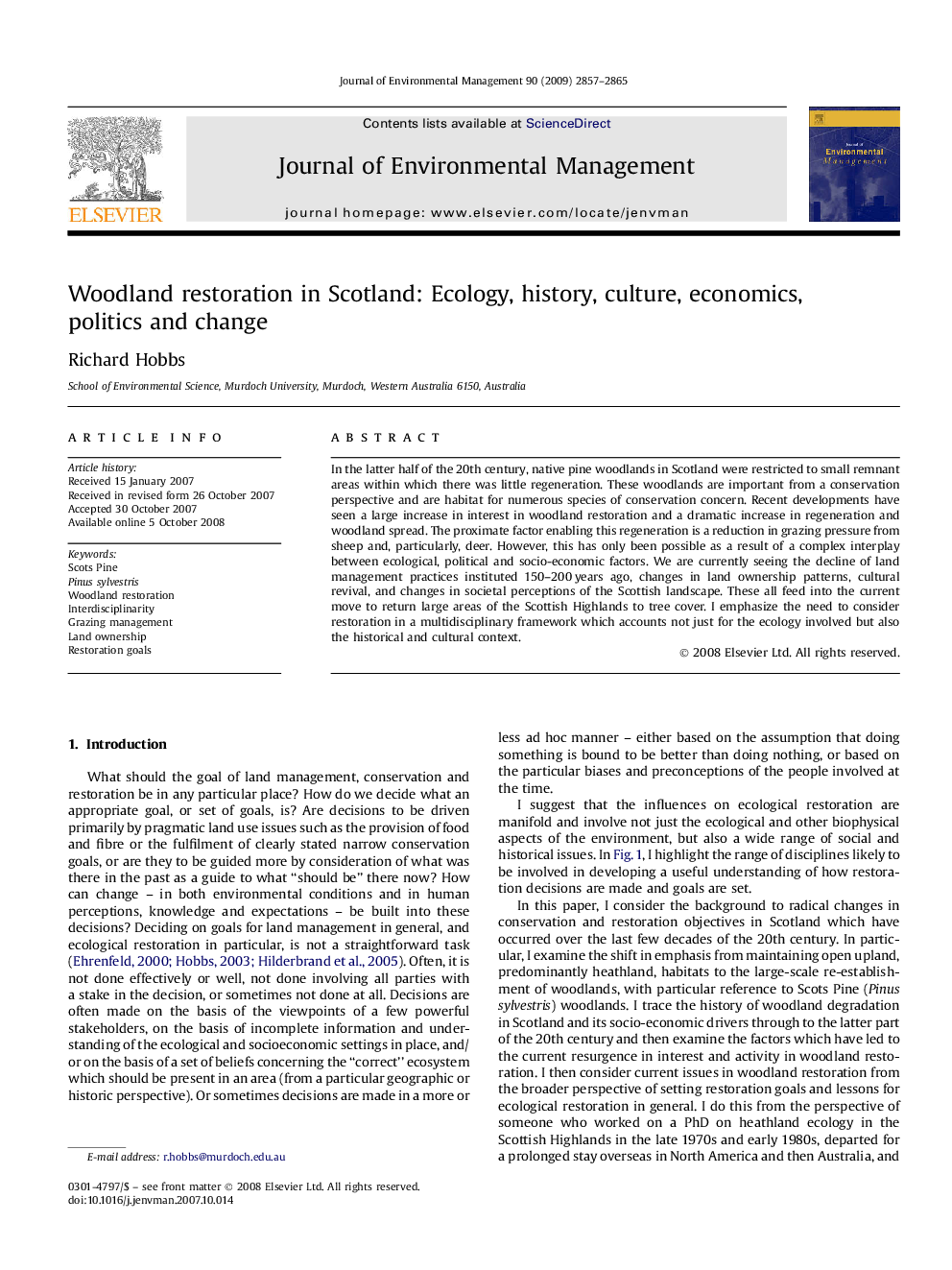| Article ID | Journal | Published Year | Pages | File Type |
|---|---|---|---|---|
| 1057628 | Journal of Environmental Management | 2009 | 9 Pages |
In the latter half of the 20th century, native pine woodlands in Scotland were restricted to small remnant areas within which there was little regeneration. These woodlands are important from a conservation perspective and are habitat for numerous species of conservation concern. Recent developments have seen a large increase in interest in woodland restoration and a dramatic increase in regeneration and woodland spread. The proximate factor enabling this regeneration is a reduction in grazing pressure from sheep and, particularly, deer. However, this has only been possible as a result of a complex interplay between ecological, political and socio-economic factors. We are currently seeing the decline of land management practices instituted 150–200 years ago, changes in land ownership patterns, cultural revival, and changes in societal perceptions of the Scottish landscape. These all feed into the current move to return large areas of the Scottish Highlands to tree cover. I emphasize the need to consider restoration in a multidisciplinary framework which accounts not just for the ecology involved but also the historical and cultural context.
